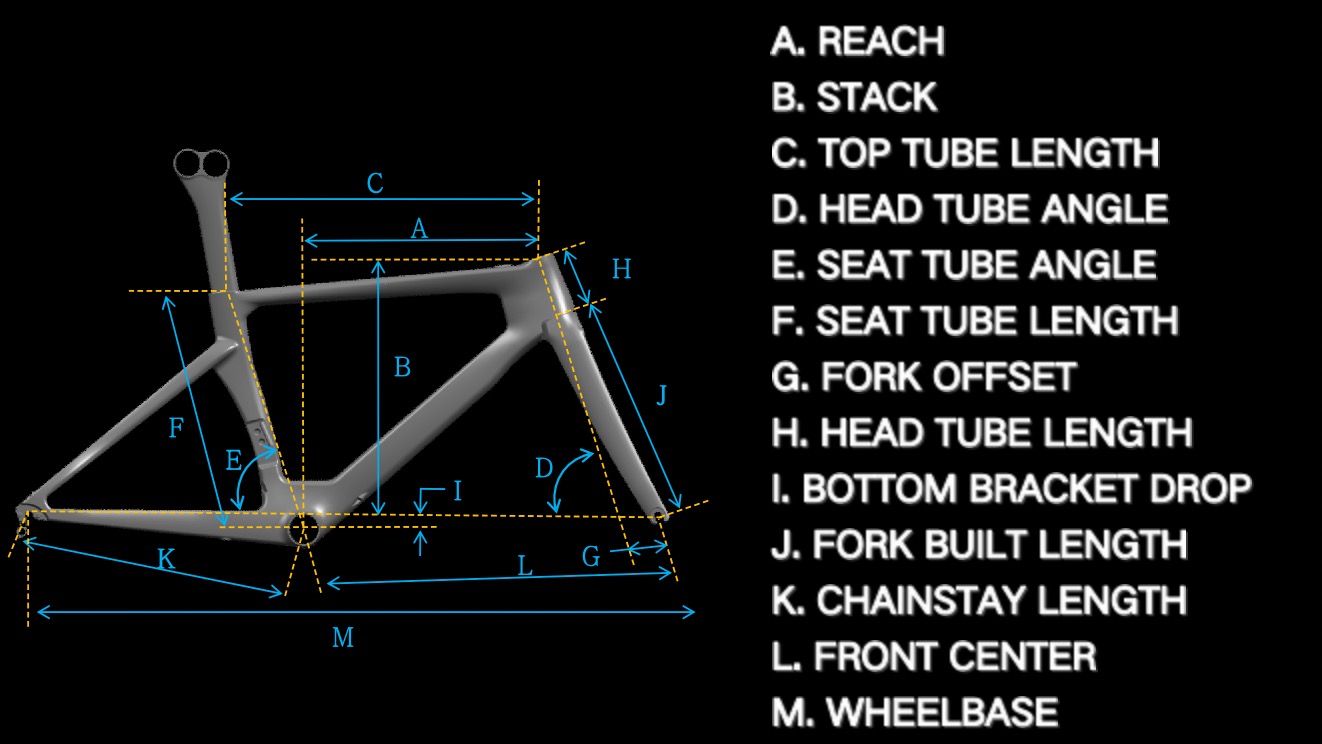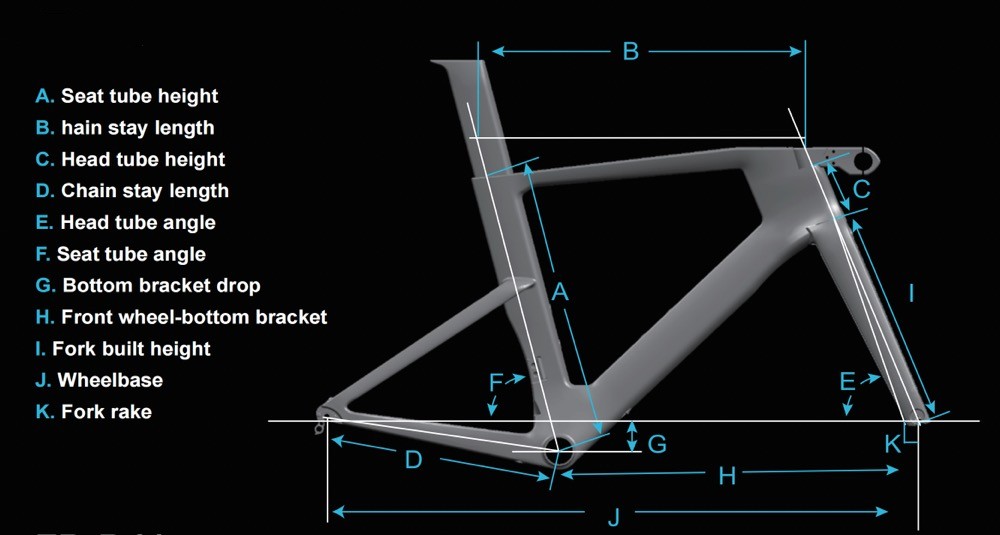Categories
New Blog
Tags
Bike Frame geometry is a collection of measurements in lengths and angles of various bicycle frame members, and the way in which they are put together. Frame geometries differ from one bike category to another, and between different bike manufacturers. These measurements play a critical role in how a bike performs. In this article,you will learn the basics of bike frame geometry and some terms and definitions every cyclist should know.Then, you can further adjust the fit by adjusting the relationship between the bike’s Points of Contact (seat, hands and feet) .
It's necessary to know that bikes geometry are different from the size. When manufacturers discuss the size of a bike, whether by description, such as small, medium, large, or by measurements, such as 51cm, 54cm, or 56cm, those measurements are not universal and are not bound by any standard. Therefore, knowing how to read geometry charts is crucial for comparing different types of bikes from different manufacturers.
Bicycle frames usually express the length of the seat tube in centimeters or inches. For example, a manufacturer might measure the seat tube length of a bicycle to be 51cm and then describe it as a small frame. The same measurement can also be described as x-small or small/medium, which depends on the manufacturer, the bike style, and even the sale market region.

1,Frame Size
The length of tube #F in the above diagram is also the size of the bike frame.

The frame size is simply the length of the bike’s seat tube, measured where the bike seat post starts to the crank, measured in centimeters. However, you might occasionally find a manufacturer that refers to their bikes as small, medium, or large. Double-check what that size means to that manufacturer to avoid confusion. you might occasionally find a manufacturer that refers to their bikes as small, medium, or large. Double-check what that size means to that manufacturer to avoid confusion.
2,Stack
The stack refers to the vertical portion of the bike when measured from the center of the bottom bracket to the top of the head tube. This helps determine how tall a frame is.
3. Reach
The reach refers to the horizontal measurement of the frame from the bottom bracket to the top-centre of the head tube. This gives an indication of how long a frame is.
There is another words “ a rider's reach”,which is easily mixed with the bike frame reach.The rider’s reach refers to the rider specifically and is measured from the tip of the saddle to the end of the stem. Regardless of the frame reach, a rider's reach can be manipulated by changing the saddle set-back position, seatpost, and stem length.
If a bike frames is too tall or long for an individual, they won’t be able to ride it comfortably, for example,race bikes normally have a longer reach than endurance bikes to improve aerodynamics.
4,Head Tube Length & Angle
The bicycles head tube is an important measurement, which includes two key measurements that have a direct influence of a bikes handling: the head tube angle and the length.
The head tube length is the measurement from the bottom to the top of the head tube.A longer head tube will put riders in a more upright position which is easier on your back and neck. Touring and endurance road bikes often have super tall head tubes in order to get the most comfortable body position for longer rides, while mountain bikes often take shorter head tubes to place the rider in a more aggressive position for aerodynamics.
The head tube angle refers to the angle of the head tube relative to the ground.A steeper head angle has faster steering. There is less effort required to steer it.A slacker head angle bike fork is going to stick out farther, creating a more stable ride at high speeds, but also be slower handling.
5,Seat Tube Angle
The seat tube angle refers to the angle of the seat tube with the ground.This angle usually between 71 to 74 degrees.
6,Wheel Base
The wheelbase is the horizontal distance front to rear axle. It is measured by determining the distance between the centers of the two wheels. A long wheelbase can provides stability and comfort in high speeds, while shorter wheels base can let riders more better handle.
7,Bottom Bracket Drop
bottom bracket (BB) is the point that your cranks and pedals revolve around. The Bottom bracke drop is the vertical distance between the centre of the bottom bracket and an imaginary horizontal line between the front and rear dropouts. Bottom bracket drop determines how high your cranks sit from the ground when you pedal.
It is very easy to mixed the bottom bracket drop and bottom bracket height, which is the distance from the ground to the centre of the bottom bracket.
There are so many others measurement on the bike geometry,we will explain them in following Blogs.